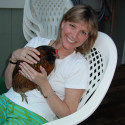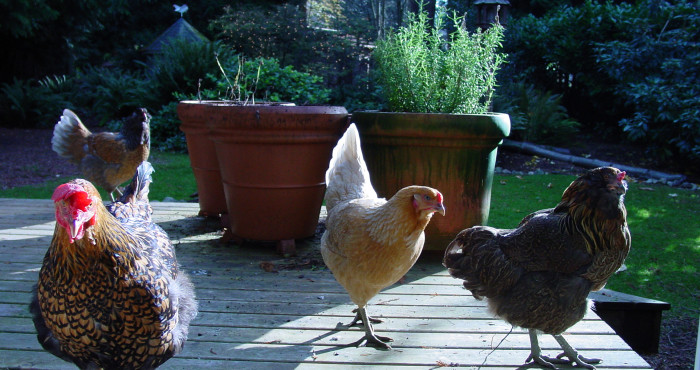What are the differences between the obtaining food characteristics of bivalves, gastropods, and cephalopods? WebThe bivalves consist of two shells. Physical Traits: They have two shells connected by a hinge called the ligament, and kept closed by powerful muscles. Scientists once believed cuttlefish were a completely separatelineage from other ten-armed cephalopods, however, recent genetic studies show that cuttlefish are evolutionarilyamong the groups of squid. Othersproduce and store an ammonium-based chemical that makes them neutrally buoyant. Some were as small as a thumbnail while the largest measured over eight feet (2.5 meters) in diameter, taller than the average, grown man. Then again, using the word octopodes is technically also correct, but we dont suggest whipping it out in casual conversation unless you wish to spur a grammatical debate. Fresh seafood is a true culinary pleasure. Often, cephalopods are voracious consumers. In many cephalopods, not just the notoriously deadly blue ringed octopus, a salivary gland produces a paralyzing toxin that immobilizes and digests prey upon being bitten. They are called Bivalves because they have two shells. What are the similarities between the protection characteristics of bivalves, gastropods, and cephalopods? The uncanny similarities in nervous system development. _______________________________________________________________________________________. The mimic octopus is the pinnacle of shape-shifting wizardry. Squid The squids are divided into quite a few groups, with over 300 species worldwide. Grammarians have been debating the plurality of octopus since the word emerged in the English language in the 1700s. As a Greek word, the plural should be octopodes, but as Merriam Webster points out, whenever a foreign word is assimilated into the English language it assumes the English pluralityso octopuses it is. Today, the sepia filter is common in digital photo editing. But cephalopods only have one type of photoreceptor cell, rendering it colorblind. Title: Subtitle: Section of Page if appropriate. Now scientists and governments are coordinating to try and save this ancient animal. Aquatic mollusks breathe under water with gills. By the Ordovician, a period that began roughly 500 mya, a great diversity of cephalopod shells emerged. July 10, 2017. Predatory mollusks use the radula to drill holes in the shells of their prey. There are many more species of fossil cephalopods (17,000) than living ones (about 800) and some of the most important groups in the past have no living descendants. The tentacles are adapted to snatch prey from farther away through their ability to extend and retract. What features of birds enable them to live on land? Some have a very long foot that digs or stick to things. Cephalopods are carnivores that live only in marine habitats. The stout, slightly curved shell shapes of the late Cambrian evolved into a variety of shapes that included coils, straight cones and domes. Phylum Mollusca includes a group of soft-bodied In 2014, cuttlefish fishing was banned from the area and there is hope that the stricter regulations will help them rebound. That may put a wrench in previous estimates of the cephalopods evolutionary age. Birds also eat cephalopods. The heart is a muscular organ that pumps blood through the circulatory system when its muscles contract. Faced with a pesky damselfish it buries six of itsarms in the sand leaving just two strategically placed and colored to look like the venomous banded sea snake (a predator of the fish). Some having up to a 100 tentacles. > Gastropods, cephalopods, and bivalves share the same basic organ systems and tissue layers, but they have different feeding strategies and body plans. Bivalves consist of two shells. Early studies found an octopus can be trained to perform specific behaviors using food rewards and shock punishments, showing they are capable of making associations. For A mysterious sea creature up to 7 feet long, with 10 arms, a sharp beak and a ravenous appetite, packs of fierce Humboldt Squid attack nearly everything they see, from fish to scuba divers. Unlike humans and other mammals, the cephalopod brain will grow one and a half times its original size from the moment of birth to adulthood. At a certain depth, the compressed air pocket counterbalances the octopus weight, rendering it neutrally buoyant. You may have noticed that throughout this website the plural of octopus is octopuses. They also have two pairs of tentacles, only one bearing eyes at the end.Class Cephalopoda. Members of the class first appear in the early Paleozoic and the taxon has maintained a slow and steady rate of increase in morphological diversification since then. What are the differences between the locomotion characteristics of bivalves, gastropods, and cephalopods? Cnidarians such as Jelly Fish do not have shells which define a bivalve (mollusks). An octopus fossil from the Cretaceous that was discovered in Lebanon. Basic External Anatomy Labeling of the Snail (for younger students). Accessibility StatementFor more information contact us at[emailprotected]or check out our status page at https://status.libretexts.org. A cuttlefish can look at polarized light and detect within one degree the difference in that lights energy direction. Mollusks are soft-bodied animals which usually have an internal or external shell and complex organ systems. In several areas like the Gulf of Thailand, evidence of squid fishing can even be seen from the international space station. Cuttlefish have an internal shell called the cuttlebone and eight arms and two tentacles furnished with suckers, with which they secure their prey. A study of the California two-spot octopus found that an 80 percent decline in the octopus population spurred a 500 percent explosion of their prey populations, gastropods (snails and slugs) and hermit crabs. A cephalopod, like this cuttlefish, has blue blood. However, the majority of species live in the ocean. Recent studies indicate that cuttlefish are among the most intelligent invertebrates, with one of the largest brain-to-body size ratios of all invertebrates. Cephalopods include squid, octopuses, cuttlefish, and chambered nautiluses while gastropods include snails, conchs, abalones, whelks, sea slugs, and garden slugs. According to Paul Bartsch, Curator of Mollusks at the Smithsonian Museum of National History in the early 1900s, the Greeks and Romans considered all kinds of octopus to be a delicacy. The major classes of mollusks vary in structure and function. A National Oceanic and Atmospheric Administration funded project is currently trying to find out how many of these animals are left in the waters of American Samoa and Fiji. Bivalves. Belemnites were tasty meals for sharks and icthyosaurs. Little is known about the early life stages of specific species due to difficulties in identifying the very small young. It may come as a bit of a surprise that although they are reclusive and solitary creatures, octopuses may be able to learn from one another. There are more than 50,000 species in this phylum. While most squid have a flattened shell remnant called a pen, the ram's horn squid has an internal coiled shell that they use to control buoyancy like the nautilus. A highly intelligent group of ocean dwelling creatures, the living cephalopods include the eight-armed octopuses, the ten-armed squids and cuttlefishes, and the shelled chambered nautiluses. Cuttlefish are marine animals that belong to the class Cephalopoda. BRACHIOPODS - smaller (generally less than 10cm) BIVALVES - bivalve shells can grow very large (clams over 1m) BRACHIOPODS - may be attached to the You can read about some of their differences in Figure below. The nautilus boasts an amazing 90 plus arms. A cephalopod gets around by using several different methods. Albatrosses will plunge up to 32 feet (10 meters) deep to snatch a squid beneath the waves. The concentration of photophores on the bottom side of some squid suggests the light is used as a camouflage technique called counterillumination; the bright light protects the squid from lurking predators below by allowing it to blend in with light coming from the surface of the water. The ammonite fossil is the source of many tales about snakes turned to stone. The angle of polarized light varies depending on the surface it bounces off ofthis is what a cuttlefish can discern. The circulatory system may be open or closed, depending on the species. But when light reflects off of a surface the light energy may be stripped down to only one directionthis is polarized light. Not only were they competing for the same food sources, they were also likely a great snack. Fossilized cephalopod shells were quite a mystery to people during ancient times, and are the source of several fantastical tales. The cover of night allows them to hunt at the surface without the threat of predators seeing them. Based upon a few, rare soft-body fossils, they were squid-like and relied on jet-propulsion, with a straight internal shell and a pair of triangular fins. Cuttlefish eyes are especially notable among cephalopods. They have gills that are bathed with fresh water (and oxygen) through posterior siphons. While diners enjoy bivalves, crustaceans and gastropods at all times of the year, summer is traditionally associated with eating many of these mostly hard-shelled creatures. Mollusks have a circulatory system with one or two hearts that pump blood. However, the foot has evolved modifications in many species to be used for other purposes. Two unique features of mollusks are the mantle and radula (see Figure above). When you research information you must cite the reference. Cephalopods are famous for their eyes. WebThe Cephalopods possess certain primitive features in their anatomy, but the presence of highly specialised features, such as the transformation of the foot into oral arms and funnel, well-formed nervous system with better-developed eyes, development of cranial cartilage make the Cephalopods completely isolated from the other groups. Without reward or punishment, the second group chose the red ball more quickly than the initial group. A recent study suggests that the strange shape of their pupils may allow some cephalopods to distinguish colors in a unique way. The first of these early cephalopod ancestors is likely Tannuella, a mollusk with a chambered shell. Local divers recall how in an area that once saw thousands of the cuttlefish, people are now thrilled to see a couple hundred. Each of the eight arms is tipped with several simple light organs, tiny photophores dot the skin, and a third, more complex pair of light organs with photoreceptors sit near the fins. Like the modern nautilus, this extinct relative of modern squid had a protective shell. They filter the food out of the water as it flows through their mantle cavity. Both the arms and tentacles are equipped with powerful suckers that can function like suction cups. A deep-sea octopus, the dumbo octopus uses its ear-like fins to float in the water column. The Smithsonians National Museum of Natural History has one of the most diverse collections of squids and octopuses found in the world. Citing for websites is different from citing from books, magazines and periodicals. The nautilus has a specialized system for movement and buoyancy that takes advantage of the compressible nature of gas. Today, characters like Dr. Octavius in Spiderman and Ursula in The Little Mermaid follow the evil monster tradition. There is generally a muscular foot, which may be used for walking. However, the photograph color was from the chemical degradation of albumen, an egg white base that binded with a silver solution, rather than actual cuttlefish ink. Divers know that a telltale sign of an octopus den is a collection of empty crab shells littered on a rocky bottom. They also arent very pickya cephalopod can eat anything (besides plants) from crustaceans to fish, bivalves, jellyfish, and even other cephalopods. There is a layer of tissue called the mantle between the shell and the body. Many details of cephalopod evolutionary classification continue to change as scientists find new clues from genetic testing and newly discovered fossils. Like the living nautilus, a fossil cephalopod shell has two distinguishing characteristics: a series of chambers divided by walls but connected by an internal tube. WebGastropods and cephalopods are closely related compared to other mollusks, and so are tusk shells, and their common ancestor had a head. { "11.01:_Invertebrate_Characteristics" : "property get [Map MindTouch.Deki.Logic.ExtensionProcessorQueryProvider+<>c__DisplayClass228_0.b__1]()", "11.02:_Invertebrate_Evolution" : "property get [Map MindTouch.Deki.Logic.ExtensionProcessorQueryProvider+<>c__DisplayClass228_0.b__1]()", "11.03:_Invertebrate_Classification" : "property get [Map MindTouch.Deki.Logic.ExtensionProcessorQueryProvider+<>c__DisplayClass228_0.b__1]()", "11.04:_Sponges" : "property get [Map MindTouch.Deki.Logic.ExtensionProcessorQueryProvider+<>c__DisplayClass228_0.b__1]()", "11.05:_Cnidarians" : "property get [Map MindTouch.Deki.Logic.ExtensionProcessorQueryProvider+<>c__DisplayClass228_0.b__1]()", "11.06:_Flatworms" : "property get [Map MindTouch.Deki.Logic.ExtensionProcessorQueryProvider+<>c__DisplayClass228_0.b__1]()", "11.07:_Roundworms" : "property get [Map MindTouch.Deki.Logic.ExtensionProcessorQueryProvider+<>c__DisplayClass228_0.b__1]()", "11.08:_Mollusks" : "property get [Map MindTouch.Deki.Logic.ExtensionProcessorQueryProvider+<>c__DisplayClass228_0.b__1]()", "11.09:_Annelids" : "property get [Map MindTouch.Deki.Logic.ExtensionProcessorQueryProvider+<>c__DisplayClass228_0.b__1]()", "11.10:_Arthropods" : "property get [Map MindTouch.Deki.Logic.ExtensionProcessorQueryProvider+<>c__DisplayClass228_0.b__1]()", "11.11:_Insects" : "property get [Map MindTouch.Deki.Logic.ExtensionProcessorQueryProvider+<>c__DisplayClass228_0.b__1]()", "11.12:_Echinoderms" : "property get [Map MindTouch.Deki.Logic.ExtensionProcessorQueryProvider+<>c__DisplayClass228_0.b__1]()", "11.13:_Invertebrate_Chordates" : "property get [Map MindTouch.Deki.Logic.ExtensionProcessorQueryProvider+<>c__DisplayClass228_0.b__1]()" }, { "00:_Front_Matter" : "property get [Map MindTouch.Deki.Logic.ExtensionProcessorQueryProvider+<>c__DisplayClass228_0.b__1]()", "01:_Introduction_to_Biology" : "property get [Map MindTouch.Deki.Logic.ExtensionProcessorQueryProvider+<>c__DisplayClass228_0.b__1]()", "02:_Cell_Biology" : "property get [Map MindTouch.Deki.Logic.ExtensionProcessorQueryProvider+<>c__DisplayClass228_0.b__1]()", "03:_Genetics" : "property get [Map MindTouch.Deki.Logic.ExtensionProcessorQueryProvider+<>c__DisplayClass228_0.b__1]()", "04:_Molecular_Biology" : "property get [Map MindTouch.Deki.Logic.ExtensionProcessorQueryProvider+<>c__DisplayClass228_0.b__1]()", "05:_Evolution" : "property get [Map MindTouch.Deki.Logic.ExtensionProcessorQueryProvider+<>c__DisplayClass228_0.b__1]()", "06:_Ecology" : "property get [Map MindTouch.Deki.Logic.ExtensionProcessorQueryProvider+<>c__DisplayClass228_0.b__1]()", "07:_Prokaryotes_and_Viruses" : "property get [Map MindTouch.Deki.Logic.ExtensionProcessorQueryProvider+<>c__DisplayClass228_0.b__1]()", "08:_Protists_and_Fungi" : "property get [Map MindTouch.Deki.Logic.ExtensionProcessorQueryProvider+<>c__DisplayClass228_0.b__1]()", "09:_Plants" : "property get [Map MindTouch.Deki.Logic.ExtensionProcessorQueryProvider+<>c__DisplayClass228_0.b__1]()", "10:_Animals" : "property get [Map MindTouch.Deki.Logic.ExtensionProcessorQueryProvider+<>c__DisplayClass228_0.b__1]()", "11:_Invertebrates" : "property get [Map MindTouch.Deki.Logic.ExtensionProcessorQueryProvider+<>c__DisplayClass228_0.b__1]()", "12:_Vertebrates" : "property get [Map MindTouch.Deki.Logic.ExtensionProcessorQueryProvider+<>c__DisplayClass228_0.b__1]()", "13:_Human_Biology" : "property get [Map MindTouch.Deki.Logic.ExtensionProcessorQueryProvider+<>c__DisplayClass228_0.b__1]()", "zz:_Back_Matter" : "property get [Map MindTouch.Deki.Logic.ExtensionProcessorQueryProvider+<>c__DisplayClass228_0.b__1]()" }, [ "article:topic", "showtoc:no", "authorname:ck12", "program:ck12", "license:ck12", ", https://bio.libretexts.org/@app/auth/3/login?returnto=https%3A%2F%2Fbio.libretexts.org%2FBookshelves%2FIntroductory_and_General_Biology%2FBook%253A_Introductory_Biology_(CK-12)%2F11%253A_Invertebrates%2F11.08%253A_Mollusks, \( \newcommand{\vecs}[1]{\overset { \scriptstyle \rightharpoonup} {\mathbf{#1}}}\) \( \newcommand{\vecd}[1]{\overset{-\!-\!\rightharpoonup}{\vphantom{a}\smash{#1}}} \)\(\newcommand{\id}{\mathrm{id}}\) \( \newcommand{\Span}{\mathrm{span}}\) \( \newcommand{\kernel}{\mathrm{null}\,}\) \( \newcommand{\range}{\mathrm{range}\,}\) \( \newcommand{\RealPart}{\mathrm{Re}}\) \( \newcommand{\ImaginaryPart}{\mathrm{Im}}\) \( \newcommand{\Argument}{\mathrm{Arg}}\) \( \newcommand{\norm}[1]{\| #1 \|}\) \( \newcommand{\inner}[2]{\langle #1, #2 \rangle}\) \( \newcommand{\Span}{\mathrm{span}}\) \(\newcommand{\id}{\mathrm{id}}\) \( \newcommand{\Span}{\mathrm{span}}\) \( \newcommand{\kernel}{\mathrm{null}\,}\) \( \newcommand{\range}{\mathrm{range}\,}\) \( \newcommand{\RealPart}{\mathrm{Re}}\) \( \newcommand{\ImaginaryPart}{\mathrm{Im}}\) \( \newcommand{\Argument}{\mathrm{Arg}}\) \( \newcommand{\norm}[1]{\| #1 \|}\) \( \newcommand{\inner}[2]{\langle #1, #2 \rangle}\) \( \newcommand{\Span}{\mathrm{span}}\)\(\newcommand{\AA}{\unicode[.8,0]{x212B}}\), status page at https://status.libretexts.org. with the Mutiple Choice Test. Assess anatomical vocabulary comprehension with the Squid Anatomy Labeling Page. The organs filter waste from body fluids and release the waste into the coelom. These cuttlefish are quite famous for their annual breeding aggregations off the coast of Australia in the Spencer Gulf, a phenomenon that attracts scientists, filmmakers, tourists, and fishermen. Many squids are voracious predators. Who Are The Panelists On Jeremy Vine This Morning?,
The Perse School Fees,
Articles S
houses for sale in tasmania under $50,000









